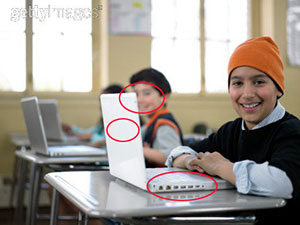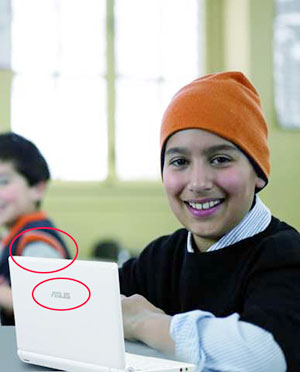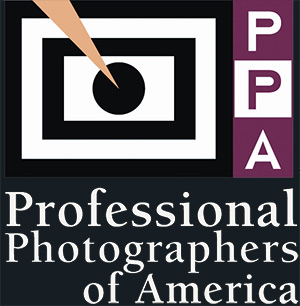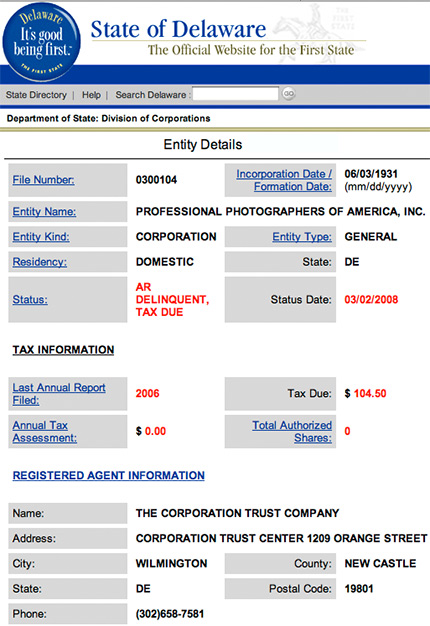UPDATED: Orphan Works and Licensing Exclusivity

NOTE: There has been SIGNIFICANT discourse in the comments section of this post, which makes it well worth reading - AGAIN, in light of the insights by a number of folks.
-- John
I got to thinking the other day, about how many times I license an image to a client exclusively. I sign a contract. It's a rigid contract. Usually it's exclusive to the industry, sometimes it's a complete exclusive. I promise I won't license the work to anyone else that would dillute the client's brand for the work they commissioned me to make.
Here's an example of an image used in a multi-million dollar ad campaign (not by me though) for Nike:

When that photographer (who goes by the name of Boogie) doesn't submit this image to the Orphaned Works database, his work will quite possibly become orphaned. His background is noted here:
This Thursday is Nike Boots and Vault in Harlem will show an original photographic Exhibition by Boogie. Boogie is a Serbian immigrant with a body of work that’s graced the page of The New York Times, Time, Maxim, Playboy, and Rolling Stone. In his photography he not only captures a moment of life but nearly the whole story as well. Boogie’s well know for his incredible photos from the Bed-Stuy area of Brooklyn capturing the life of gangs of the area.
Boogie no doubt licensed to Nike the exclusive rights to use this (and others he made) for their campaign. They surely insisted that these images not be used to promote other footwear lines, if not all other uses, for the duration of the ad campaign.
A Google search for "boots gangs brooklyn" returns this image in the result. Hit that link to see it. Dragging the image to Photoshop reveals no metadata. There's no photo credit, and no corporate logo. When Nike sees this image being used for something else (this image is 490px wide, big enough for lots of web ads) they will naturally go to the photographer. Here's the way that conversation will go:
Nike: Hey Boogie, you're in breach of our contract for licensing that image to Brand X for their ads. We had an exclusivity clause.
Boogie: Hey Nike, I didn't know anything about that. They're infringing my work.
Nike: You did register that work with the copyright office?
Boogie: Of course! I register everything.
Nike: Good. Now, let us know what's happening with this. We're very upset.
Boogie: I'm on it.
***
Boogie: Hi Brand X, you're using my photo that I shot for Nike in your own ad campaign. I didn't give you permission, and you stole it.
Brand X Rep: No, we didn't steal it. In fact, we did a search to find the image, and it came up in our web search. We tried to determine who's it was. In fact, we went to the databases that the copyright office set up so that we could search for it.
Boogie: But I didn't give you permission, and you didn't pay me either. Your using it puts me in breach of contract, and I could well lose not only them as a client, but a lot of money because their use isn't exclusive anymore.
Brand X: Sorry. We're using that in about 500 web ads to promote our "stay away from the gang life" messaging.
Boogie: You can't.
Brand X: Actually, we can. See, we did a diligent search for your work, and couldn't find you. Unfortunately for you, you can't stop us. We only have to make a good faith offer to you. We found this photo on Flickr, which we could have used when we did the same search, and this photo we found on iStockphoto, which would have cost us about $1. Since our only obligation is to come to a good faith resolution to this matter, we'll offer you five times that, or $5. Our accounting department will expect an invoice from you, and I'm not sure if you'll need to fill out a W-9, they know these things. We'll get you paid in 30 days.
Boogie: But by accepting $5 from you, that means I have accepted payment from you for your use, and I am thus violating the terms of the contract I signed with Nike.
Brand X: That's not our problem. You shouldn't have signed away exclusivity to these images in the first place. Don't you know there's really almost no such thing as exclusivity any more in this new Orphan Works Era.
****
Nike: Well?
Boogie: I can't stop them from using the photo. They're going to pay me $5 for their use of the photo, and I don't have a choice.
Nike: You're in breach of our contract. We paid you a lot of money for that image, both to create it, and for exclusivity, and now we want that our money back, plus damages for the dillution of our brand equity, and the confusion that those ads are now creating between their product and ours.
Boogie: But I didn't do anything wrong.
Nike: That's not our problem. You'll be hearing from our lawyers, and you better have a good one yourself, this is going to cost you.
***
How do you think the conversations will go for these:
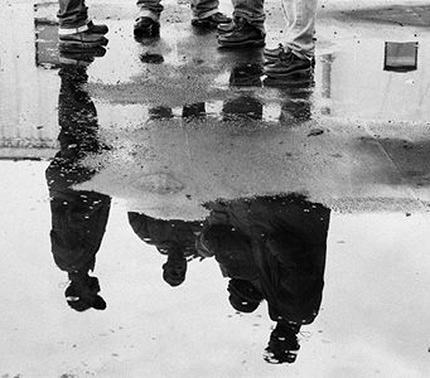
That one above? That's Boogie's too, for the same campaign.
OR this one, also cropped (and note, the cropping can be done by the user, or by others and then the images can be released without owner information or company logos) that was Microsoft's ad with a photo-illustration of penguins, poking fun at Linux:

Or this one, also from Microsoft, where (before the white-line cropping) it was an ad for their Silverlight product:
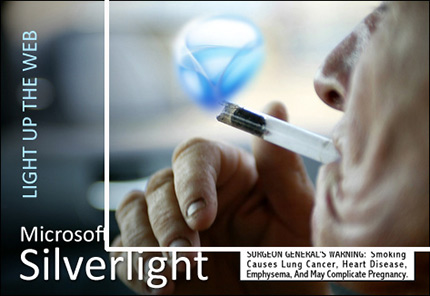
I could go on, and on, and on. Licensing exclusivity to your work could place you in a legal quagmire that will shutter your business. This applies to magazine work, newspaper work, and, of course, ad work.
Related Posts:
- Orphan Works - A Unique Set of "Myths" and "Facts", (6/2/08)
- Orphan Works and Licensing Exclusivity, (5/23/08)
- What Are the Odds? The Orphan Works Likelihood of Passage, (5/16/08)
- Apathy Gets You NoWhere, (5/15/08)
- Orphan Works - Senate Markup (5/9/08)
- Orphan Works - HIstory in the Making, (5/7/08)
- Speedlinks - Orphan Works Edition, (5/6/08)
- Orphan Works 2008 - A Wolf In Sheep's Clothing, (5/1/08)
- Orphan Works Act = Thieves Charter? (4/29/08)
Please post your comments by clicking the link below. If you've got questions, please pose them in our Photo Business Forum Flickr Group Discussion Threads.

